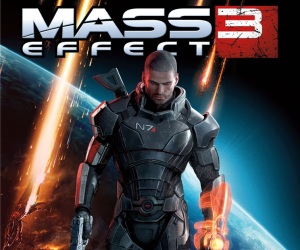 Mass Effect 3 gets the Wii U treatment, but is it the definitive version?
Mass Effect 3 gets the Wii U treatment, but is it the definitive version?
Casting aside the ridiculous controversy generated by its original ending (and BioWare’s subsequent decision to retroactively alter the climax to please the fans), Mass Effect 3 was one of 2012’s finest games, and an incredible final instalment to one of this generation’s greatest narratives. Although not an obvious choice to join the cherry-picked selection of high-profile sequel and threequel ports that graced the Wii U’s launch line-up, it nevertheless makes sense for Nintendo to include Mass Effect 3 given its impact on the industry in general. But just how special is this “Special Edition”?
First, some backstory for those Ninty fans out there who may have never played a Mass Effect title. Set in the 22nd century where galactic travel is enabled by the use of giant accelerators known as Mass Relays, the trilogy follows Commander Shepard (first name and gender to be determined by the player, but for the purposes of this article, she’s a she), as she faces off against a race of sentient machines called the Reapers, who pop up every 50,000 years to wipe out all sentient life in the galaxy. During the events of the first game, Shepard is charged by the galaxy’s ruling council to hunt down a rogue SPECTRE agent and bring him to justice, only to learn that the SPECTRE – named Saren – is under the control of a Reaper named Sovereign, previously believed to be Saren’s flagship, and that together they intend to open a Mass Relay to dark space and let an army of Reapers into the galaxy. The secret to preventing annihilation lies with the Protheans, a pre-human race who were themselves destroyed by the Reapers.
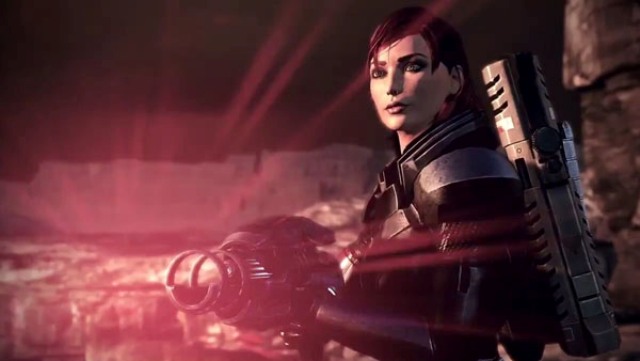
Shortly after defeating Saren and Sovereign and learning of the greater threat posed by an entire fleet of Reapers, Shepard is attacked by a mysterious vessel. During the attack, Shepard gives her life to save her crew but is retrieved – and subsequently resurrected – by Project Lazarus, an initiative spearheaded by Cerberus, an anti-alien, pro-human terrorist organisation run by the Illusive Man. A race known as the Collectors are working for the Reapers, kidnapping entire human colonies and taking them through the Omega 4 Relay; a place from which no one has ever returned. Working outside of Council law, Shepard assembles a crew of renegades, criminals and malcontents to lead a suicide mission through the Omega 4 Relay to stop the Collectors and uncover the truth behind the Reapers’ ultimate goal. Finally discovering that the Collectors are the twisted remnants of the Protheans, Shepard learns that the Reapers intend to enslave the sentient races of the galaxy in the same way, and manages to thwart their plans, but gets herself grounded and locked up for working with terrorists in the process. That’s gratitude for you.
The greatest weapon in Mass Effect’s arsenal is the freedom of choice that it allows. As Shepard, the player makes decisions minute to minute that determine which crew members join her and, in some cases, whether they live or die. Mass Effect 2 takes the concept even further, doubling the number of Shepard’s teammates and throwing a group of disparate, frictional individuals together in an enclosed environment and hoping they don’t kill each other before the mission is complete. Earning their loyalty, upgrading the Normandy and exploring every avenue is the only way to ensure that everyone survives the final suicide mission, and because of this no other game asks that you invest so much into its secondary characters. As a result no other game has more variables to calculate before you even pick up the pad than Mass Effect 3.
In the Special Edition, backstory is filled in by a pretty deep interactive comic book that will ask you to input your choices from the previous games. Lasting a good 15 to 20 minutes, the comic is a great way to dot the i’s and cross the t’s, but if this is your first foray into Shepard’s universe then 80% of these decisions will be completely lost on you. Why will you care whether Ashley or Kaiden survive Virmire? Why will you bother talking Wrex down instead of shooting him when you don’t know how great a character he is? How will your decision to save or damn the Rachni extend beyond shrugging your shoulders and making a random choice? It’s a great tool for catching you up, but is nowhere near as effective as simply playing the games as a trilogy.
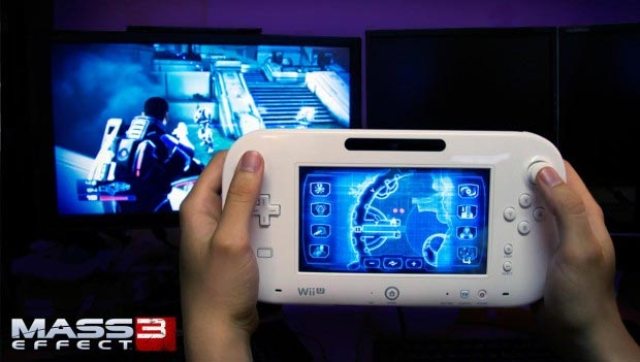
In narrative terms, a smaller crew with a more focused goal help Mass Effect 3 stay on the right track, maintaining a high level of drama and excitement for its entire runtime. Tighter combat, a dedicated melee button, streamlined skills and the inclusion of an excellent multiplayer mode ensured that Mass Effect 3 was one of 2012’s most popular titles with both consumers and critics alike. Even without adding a single thing to the existing game, it’s still an excellent addition to the Wii U’s catalogue – but I can’t help feeling that BioWare could have done so much more with the technology.
The only additions to this version are the ability to use the GamePad’s touchscreen as an area map, as a quicker way to activate tech and biotic abilities, or as a way to easily coordinate your teammates around the battlefield. The map is a nice touch, but no one who played the other versions will use it because it simply isn’t a necessary inclusion, and while touch-to-select skills remove the reliance on the rather cumbersome power wheel, not including the same option to quickly switch weapons seems like a careless omission. Ordering your teammates around the map using the touchscreen is handy, but you’re unlikely to bother with such tactics unless you’re playing on Insane difficulty anyway.
Controlling Shepard remains as smooth and intuitive as ever on the GamePad, the snap-to-cover mechanic as sharp and instant as it should be, but a perfect opportunity to tidy up the awkward melee move has been wasted, along with a lot of the GamePad’s potential awesomeness. For instance, whenever you’re not in control the GamePad screen displays a mostly-static image of the Alliance logo and nothing else; it doesn’t even display the cutscenes a la Assassin’s Creed III. The ability to manage equipment and squad formation would have been welcome, or even use the GamePad like a physical version of the iconic Omni-tool and include a minigame to hack security doors or terminals. Hell, I’d have taken the option to read the universe’s extensive, exhaustive Codex on the smaller screen and brush up on my general knowledge.
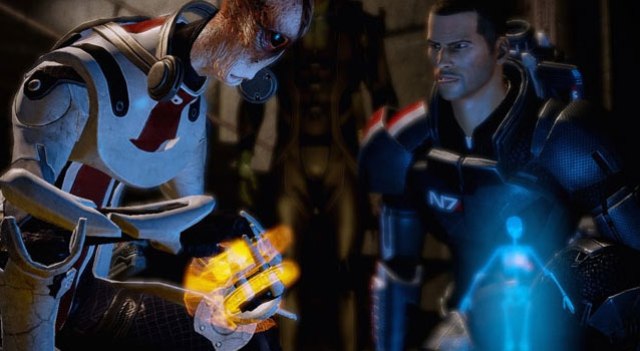
Luckily, there’s some extra content on offer. Packaged with the Special Edition is the From Ashes DLC, the day-one add-on that sparked controversy amidst claims that it was already on the disc. It introduces Javik, a Prothean crewmember whose no-nonsense, totalitarian approach to conflict management provides most of the comic relief – and who turns out to be one of the most efficient teammates. The Special Edition also includes the Extended Cut add-on that “clarifies” the original ending that so upset the fans. Full DLC offerings Omega and Leviathan are conspicuous by their absence, but the Resurgence, Rebellion and Earth multiplayer add-ons are present.
The multiplayer itself turned out to be one of the most surprising aspects of Mass Effect 3, simply because it was a lot better than anyone expected it to be. Given the inclusion of the three add-ons, the Special Edition’s Galaxy at War mode is as comprehensive an experience as it can be, and another solid reason for Wii U players to get online and get stuck in.
You begin by selecting a class and race (they come in certain, predetermined combinations in accordance with series canon), and then head out in groups of four to face down waves of enemies while completing minor objectives to earn credits – which in turn are used to buy content packs. Cleverly, these content packs will contain a random assortment of weapons, classes, races and perks, adding a sticker-pack thrill to each one you purchase. You never know if you’re going to get stuff you’ve already got, or some swanky new weapon or customisation option.
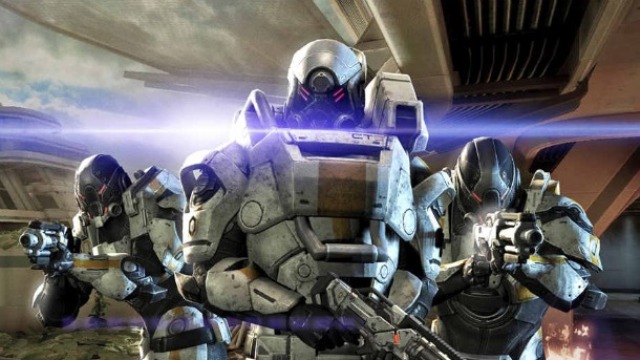
Your performance in the multiplayer adds to your Galactic Readiness, a statistic in the single player mode that determines humanity’s ability to deal with the Reaper threat and directly affects the outcome of the game. Although the Extended Cut makes achieving Galactic Readiness that bit easier, it’s still a great way to combine both modes and give the multiplayer a greater sense of context.
Graphically, the Special Edition holds up well next to the Xbox 360 and PS3, but I did notice a very slight drop in framerate during some of the flashier cutscenes; particularly the space battles. Also, it’s worth noting that the lip-synching is still universally awful, which doesn’t affect anything but is distracting nonetheless. I was also hoping for the option to play on the GamePad screen, which is sadly absent.
Should You Buy It?
Given that EA have just released the Mass Effect Trilogy on the other platforms, I’d strongly suggest going with them instead if you have the option. The Special Edition’s interactive comic fills in all the backstory and highlights the major narrative choices, but you’re simply never going to have as much fun with Mass Effect 3 if you haven’t imported a character from the previous instalments because you’ll miss all the little incidental characters and events that help weave such a rich and colourful tapestry. The lack of Wii U-exclusive features is disheartening – even a few gimmicks wouldn’t have gone amiss – and the omission of the last two DLC packs was a very strange decision on EA’s part.
If you’re a Nintendo gamer through and through who has missed out on the trilogy so far, then Mass Effect 3 Special Edition is certainly worth a purchase, purely because the game itself truly is a masterpiece, but so much is lost by jumping in at this late stage in the narrative arc. If, on the other hand, you’ve played it on one of the other platforms already, there’s not enough new stuff here to recommend it. The inclusion of an area map and some woefully spartan touchscreen integration is frankly not enough to justify spending your money a second time. It’s a fantastic game, but I’d only recommend the Special Edition if you’ve no other way of experiencing it.
Read the original Mass Effect 3 review here.






